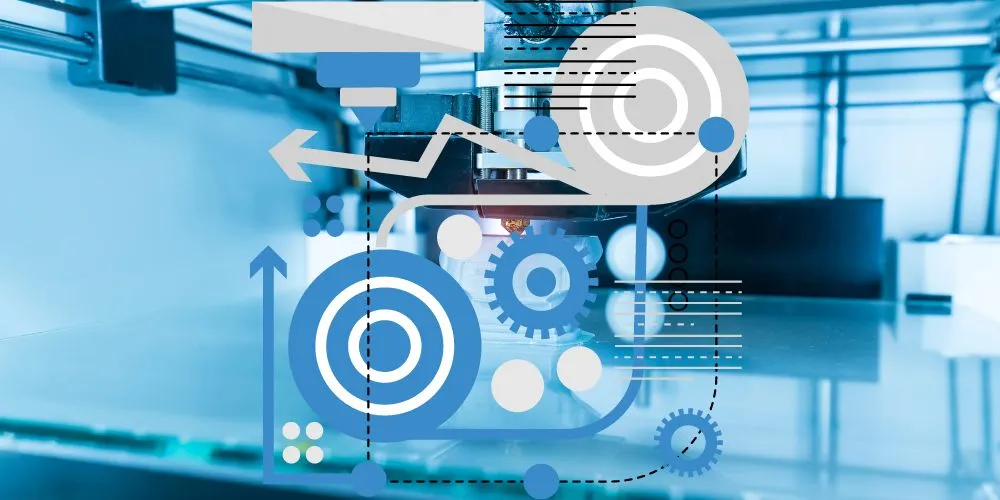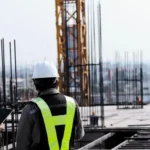In the realm of construction, the advent of 3D printing, also known as additive manufacturing, has ushered in a transformative era. This cutting-edge technology presents a revolutionary approach to designing and constructing structures, offering unprecedented flexibility, efficiency, and sustainability. This comprehensive article delves into the multifaceted applications, benefits, challenges, and future trends of 3D printing in construction, shedding light on its profound impact on reshaping the building industry’s traditional landscape.
Understanding 3D Printing in Construction
3D printing in construction fundamentally involves the layer-by-layer deposition of materials to create three-dimensional structures. Also known as contour crafting or automated construction, this technology harnesses advanced robotics and materials to redefine conventional building methods. This innovative approach is not merely an evolution but a revolution, fundamentally altering how structures are conceived and brought to life.
Applications of 3D Printing in Construction
The applications of 3D printing in construction are diverse, spanning from residential buildings to critical infrastructure projects. In residential construction, 3D printing offers an efficient and sustainable method, enabling the creation of personalized and intricately designed homes. Furthermore, its impact extends to infrastructure development, emergency response scenarios, and the construction of commercial and industrial buildings. 3D printing is reshaping the very fabric of how we conceptualize and actualize structures across various domains.
Residential Construction
In residential construction, 3D printing is a game-changer by introducing an efficient home construction method. The technology significantly reduces construction time and material waste, all while offering an unparalleled level of design flexibility. Homeowners now have the opportunity to customize their living spaces in ways that were once deemed impractical or cost-prohibitive, ushering in an era of personalized and sustainable housing solutions.
Infrastructure Development
In the broader spectrum of infrastructure development, 3D printing brings unparalleled advantages. This technology allows for the creating of bridges, viaducts, and other critical components with enhanced precision and efficiency. The ability to produce complex geometries and structures positions 3D printing as an invaluable tool in enhancing large-scale infrastructure projects’ durability and overall efficiency.
Emergency and Disaster Response
3D printing’s rapid deployment capability makes it an ideal emergency and disaster response solution. In the aftermath of natural disasters like earthquakes or hurricanes, traditional construction methods may fall short of providing swift relief. 3D printing, however, can rapidly construct temporary shelters or critical infrastructure, offering a lifeline to affected communities in their time of need.
Commercial and Industrial Buildings
In commercial and industrial construction, 3D printing is not merely a technological novelty but a scalable and cost-effective solution. Large-scale 3D printers can efficiently construct warehouses, factories, and commercial spaces. The technology’s ability to reduce construction timelines and associated costs reshapes how large-scale structures are conceived, designed, and brought to fruition.
Benefits of 3D Printing in Construction
The adoption of 3D printing in construction brings forth a myriad of benefits, fundamentally altering the dynamics of the industry. The unparalleled speed and efficiency of 3D printing stand out as one of its primary advantages. Unlike traditional construction methods that can be time-consuming, 3D printing allows for the rapid layering of materials, resulting in significantly reduced construction timelines.
Speed and Efficiency
The accelerated pace of 3D printing in construction is a game-changer. Delays often mar traditional construction projects, but 3D printing minimizes construction time, providing a faster and more efficient alternative. This speed advantage reduces project timelines and contributes to overall cost-effectiveness.
Cost-Effectiveness
The economic viability of 3D printing in construction is underscored by its inherent cost-effectiveness. Traditional construction methods often result in significant material waste and high labor costs. In contrast, 3D printing’s precise application of materials minimizes waste and optimizes usage, making it an economically sustainable choice for builders and developers.
Design Flexibility and Customization
3D printing revolutionizes the design process, offering unparalleled flexibility and customization. Architects and designers can now explore intricate and complex structures that were once considered impractical. This newfound design freedom opens up creative possibilities, allowing structures to blend functionality with artistic expression seamlessly.
Sustainability and Reduced Environmental Impact
Sustainability lies at the core of 3D printing in construction. The technology minimizes material waste and energy consumption, aligning with global sustainability goals. By precisely utilizing materials and optimizing construction processes, 3D printing significantly reduces the environmental impact associated with traditional construction practices.
Challenges in Implementing 3D Printing in Construction
Despite its immense potential, 3D printing in construction faces several challenges that require careful consideration for widespread adoption. These challenges encompass material limitations, scalability issues, regulatory approval, and the ongoing need for technological advancements and research.
Material Limitations
The range of materials suitable for 3D printing in construction is currently limited compared to traditional building materials. To address this challenge, ongoing research and development are crucial to expanding the repertoire of materials available for 3D printing. It involves certifying new materials that meet structural requirements and regulatory standards, ensuring the safety and viability of 3D-printed structures.
Scalability
Scaling up 3D printing for large construction projects poses logistical challenges. Deploying large-scale printers on-site and ensuring their continuous operation at scale requires careful planning and infrastructure development. Overcoming these scalability challenges is essential for the widespread adoption of 3D printing in construction.
Regulatory Approval and Standardization
Navigating regulatory frameworks is a significant hurdle for 3D printing in construction. Obtaining approval for 3D-printed structures involves compliance with complex standards and codes. Achieving consensus on construction standards and codes specifically tailored for 3D printing is crucial for gaining wider acceptance in the industry.
Technological Advancements and Research
Since 3D printing in construction is a relatively nascent field, ongoing research is imperative for technological advancements. Innovations in printing techniques, materials, and automation are needed to address current limitations and drive the technology’s evolution. Continuous research ensures that 3D printing remains at the forefront of construction innovation.
Future Trends in 3D Printing in Construction
The future of 3D printing in construction is marked by evolving trends that promise to enhance its capabilities and impact. Integrating robotics and artificial intelligence, on-site 3D printing, and developing multi-material printing capabilities are emerging trends that can further revolutionize the construction industry.
Integration of Robotics and Artificial Intelligence
Integrating robotics and artificial intelligence is a promising trend in the evolution of 3D printing in construction. Robotics can enhance precision and speed in the construction process, while AI algorithms can optimize design, material usage, and overall project efficiency. This convergence of technologies promises to streamline construction processes further, making them more precise, efficient, and adaptable.
On-Site 3D Printing
Advancements in portable 3D printing technology are paving the way for on-site construction. The ability to deploy 3D printers directly at the construction site can revolutionize the industry. On-site 3D printing minimizes transportation costs, increases project agility, and opens up new possibilities for construction in challenging or remote locations.
Multi-Material Printing
The development of multi-material printing capabilities is a notable trend in 3D printing. This advancement allows for the simultaneous use of different materials in the printing process, expanding the range of structures that can be constructed. Multi-material printing improves the overall structural integrity of 3D-printed buildings, unlocking new possibilities for complex and multifunctional structures.
Conclusion
3D printing in construction stands as a transformative force in the building industry. The benefits of speed, cost-effectiveness, design flexibility, and sustainability position 3D printing as a paradigm shift in construction methodologies. While challenges persist, ongoing research and technological advancements gradually address these issues, paving the way for wider adoption. As technology continues to evolve and new trends emerge, 3D printing in construction is poised to become an integral part of the building industry, offering innovative solutions for the challenges of the modern world.












